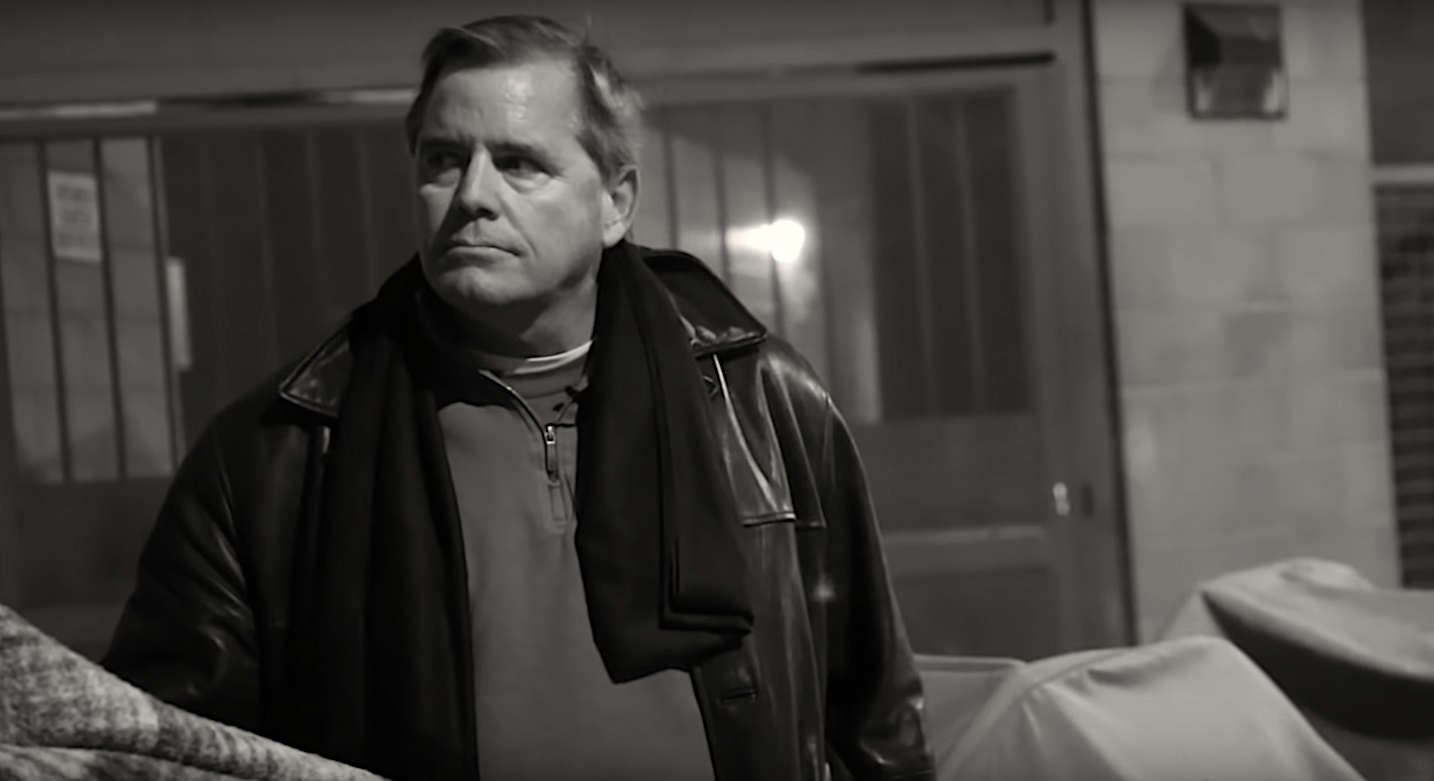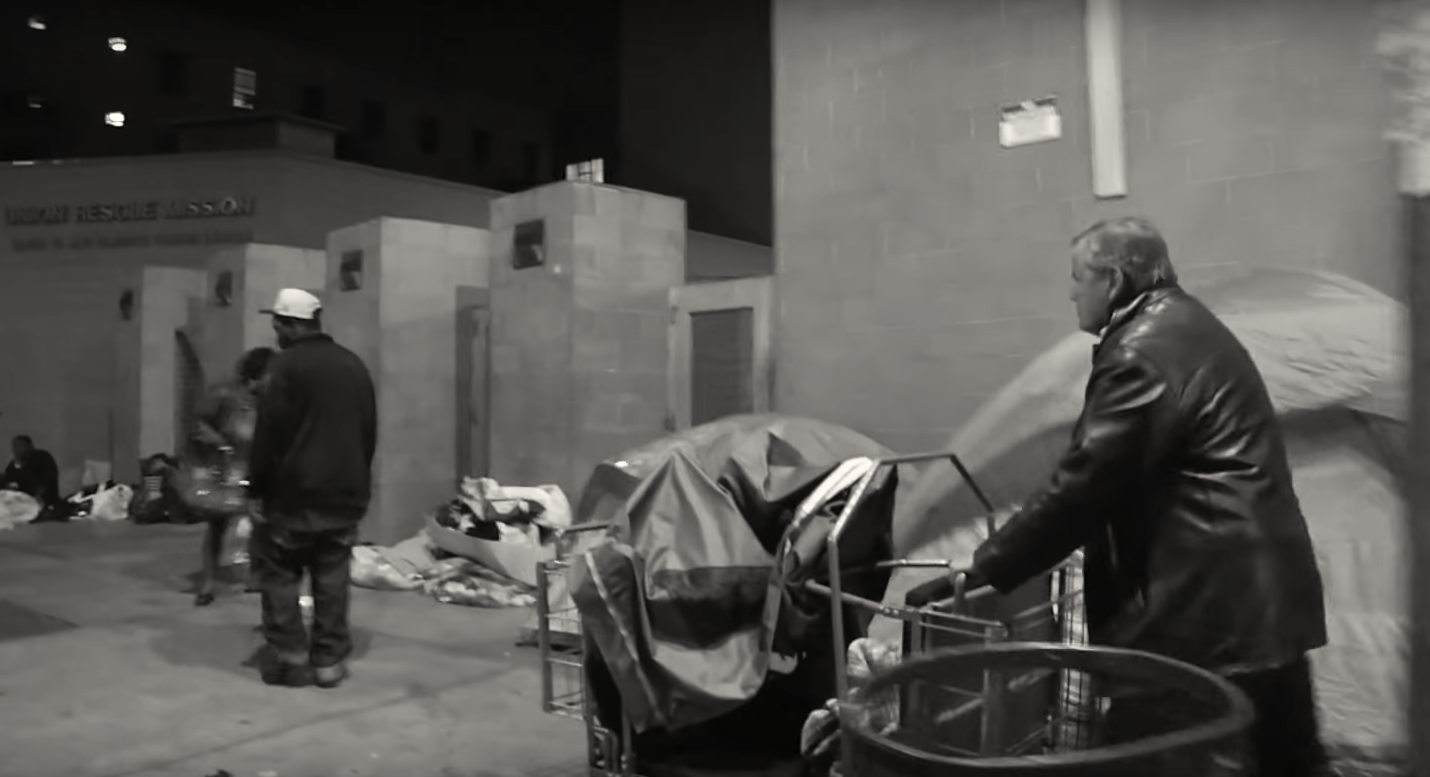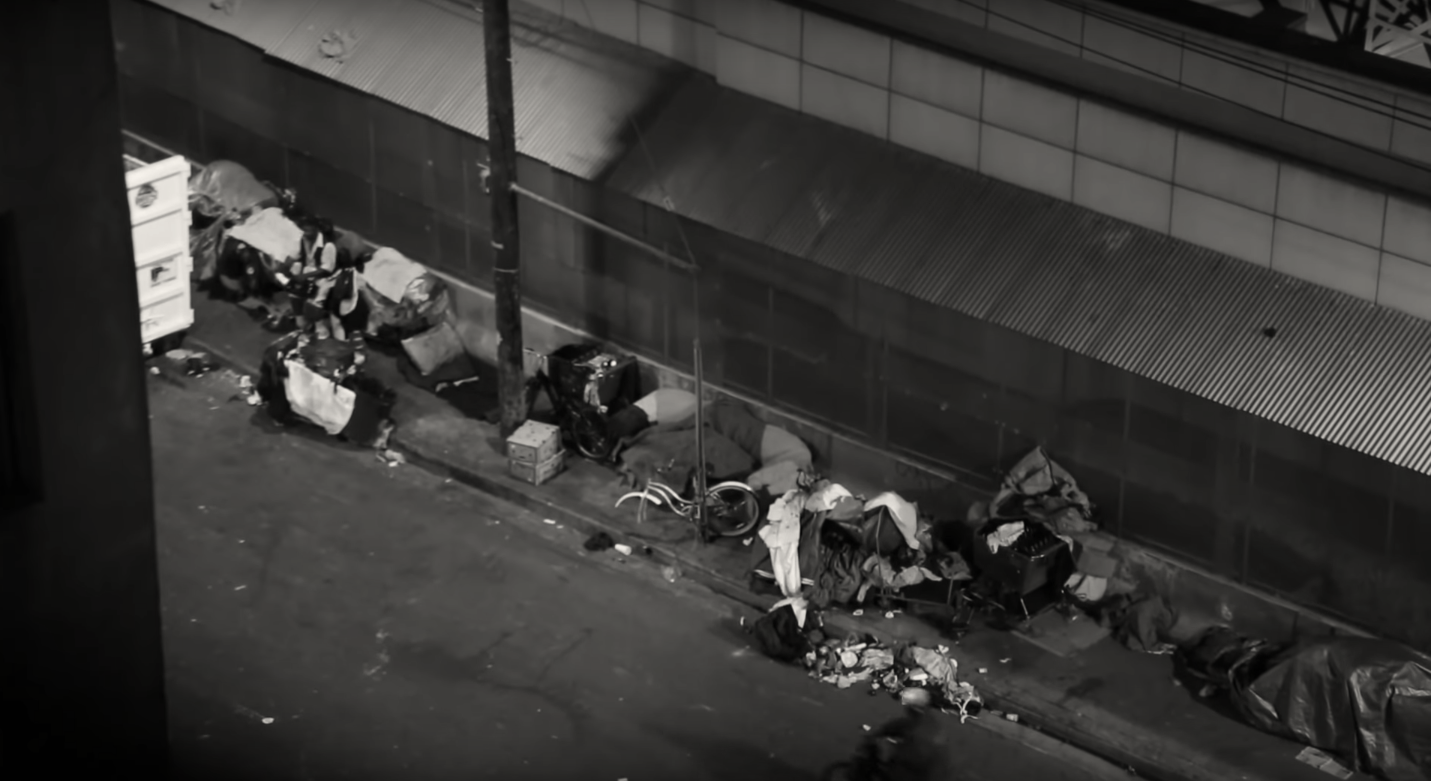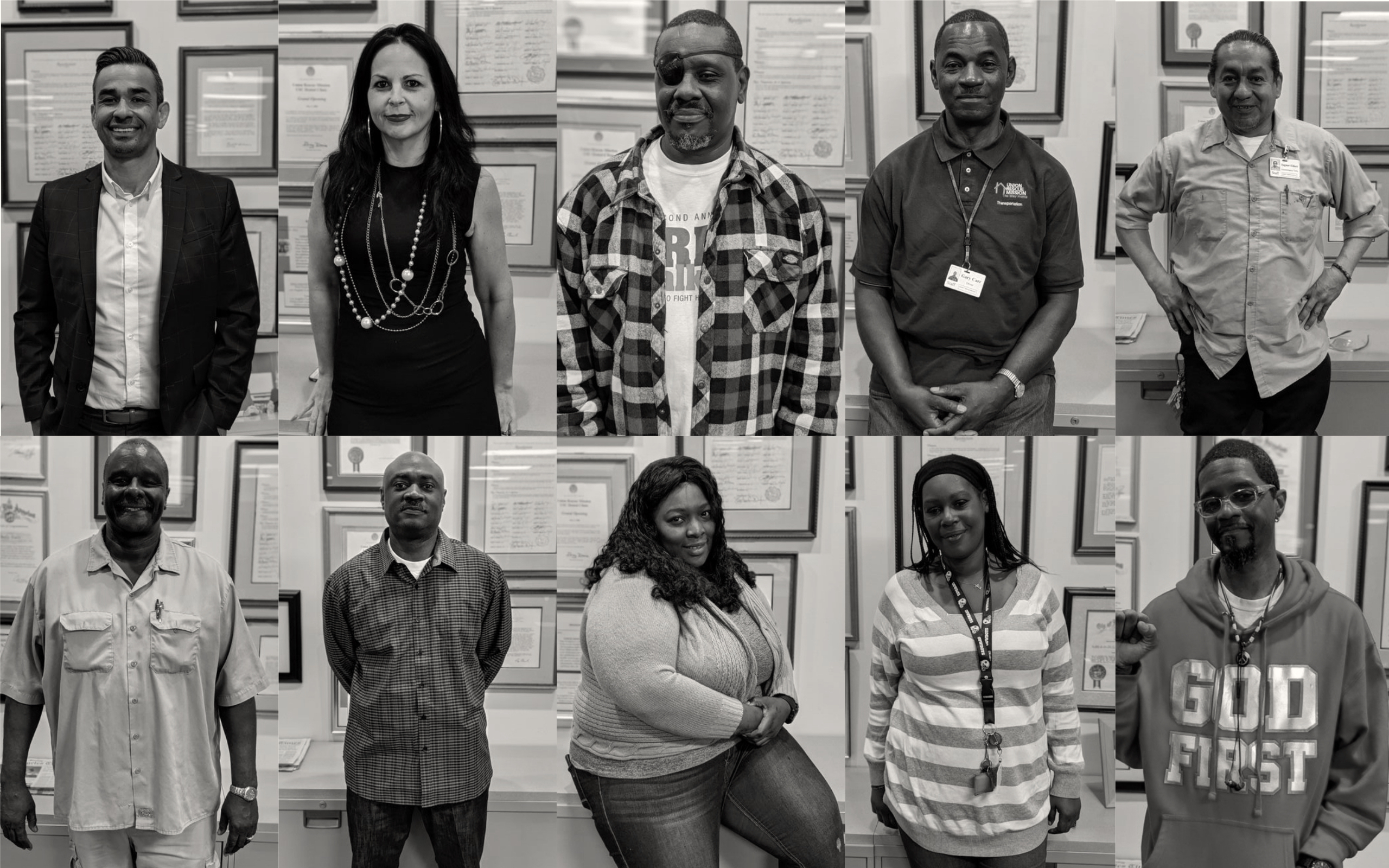Meet Rev. Andy Bales — The Man Who Lost A Leg Serving The Victims Of LAs Homeless Crisis

- Andy Bales, CEO of Union Rescue Mission in LA, lost his leg to infection after stepping in human waste while helping the homeless on Skid Row.
- Medieval diseases like typhoid fever are being carried into the city on rats due to increasing waste management costs.
- He argues that LA county and the city council are not taking productive measures to end the citys homeless crisis, but his mission is setting an example for government officials.
Rev. Andrew Bales lost part of his leg to a flesh-eating disease he was exposed to in 2014 while handing out 2,000 cold water bottles to the homeless in Los Angeles in 85-degree heat.
Bales, 60, is the CEO of a faith-based, nonprofit homeless shelter and recovery program called Union Rescue Mission (URM) who has dedicated his life to offering support to people affected by homelessness — particularly those who live on the trash-covered streets of Skid Row in downtown LA.
URM Vice President of Emergency Services LaTonja Lindsey has been with the mission for 11.5 years and told the Daily Caller News Foundation that the mission is unlike other shelters in LA because they dont accept government money and “never turn away a woman or a family.” They are also open “24 hours a day, 365 days a year.”
“Andys heart for precious human beings and his leadership always steps up to meet the needs of people devastated by homelessness, especially women and families,” Kitty Davis-Walker, URMs vice president of public affairs, told the DCNF. “He makes it clear to all who will listen that URM will not turn away a woman, child or family.”
“I do what I do because I am haunted by the number of people on the streets, and I know were making a difference,” the reverend told the DCNF.
Before losing his leg about five years ago, Bales decided to compete in a triathlon five weeks after having a kidney transplant. When he finished the race, he developed a blister that festered into a wound he thought would heal on its own over time. The next week, he was back on the streets of Skid Row handing out water bottles.
Rev Andy Bales of Union Rescue Mission on Homelessness in Skid Row/ YouTube/ Michael Blaze
“I came in contact with human waste,” he said. “At that time, there were 2,500 people living in a 53-block area, sharing nine toilets.”
For comparison, Bales said nine toilets are about “184 toilets shy of the minimum standard for a Syrian refugee camp.”
He was at the airport a week later, bound for North Carolina, when his foot began to hurt so terribly at that he asked if he could board the plane early. By the time he sat down, he said, his foot was pulsing with pain.
When he landed on the East Coast, blood blisters covered his foot, and by the time he returned to the West Coast from his short trip, he had a 104-degree fever.
Bales admitted himself into a hospital and left in a wheelchair thinking hed always be in a wheelchair because he couldnt walk. Another six weeks went by before doctors decided to remove his leg from the knee down. He got his prosthetic leg just days before his daughters wedding and still somehow found it in himself to dance all night.
But Bales has a unique connection to the homeless that hell never break from — one that has inspired him to dedicate his life to helping those in need.
“I always say Ive worked my whole life to end up on Skid Row,” he said, adding that its natural for him to help people who are struggling.
Bales dad and grandfather would jump on freight cars from Des Moines, Iowa, to Compton, California, and other towns starting when his dad was 4 years old until he was 17 and eventually joined the U.S. Army. Bales says the feeling of homelessness never left his father until the day he died.
“My dads last week on the face of the earth, he talked about the pain and shame of being a homeless teenager,” he said.
Bales worked as a church and youth pastor before making it to Skid Row. One memory of teaching children at Des Moines Christian School in 1985 has stuck with him throughout his career. While he was teaching a class, a group of kids was picking on one child who “didnt measure up.”
“I said, Knock it off, and dont treat someone like that in my classroom,'” he recalled. “But I thought, If this classroom cant treat a young child kindly, where else can he be treated kindly?'”

CEO Spends Night On Skid Row / Union Rescue Mission/ YouTube
The revered saw then that if children cant receive kindness in a classroom, they certainly cant receive kindness on the streets.
The next day after seeing one of his students get teased, he read to his class from the Book of Matthew, Chapter 25:
For I was hungry and you gave me something to eat, I was thirsty and you gave me something to drink, I was a stranger and you invited me in … Truly, I tell you, whatever you did for one of the least of these brothers and sisters of mine, you did for me.
Bales wanted to teach his students that the way in which a human being treats another human being is the way one treats God himself. (RELATED: 7 Minutes To Live: The Extraordinary Story Of D-Day Veteran Andy Andrews)
The reverend recalled one weekend when he was collecting change at a parking ramp in Des Moines, where he worked 39 hours on weekends. He was watching an NFL game on a miniature TV screen at the time when he heard a knock on the window. He turned to see a homeless man with a scraggly beard, dirty coat and a “bag of soda pop slung around his shoulder” eyeing Bales sandwich.
“Sir, can I have your sandwich?” the man asked.
“My immediate response was, Im sorry, sir, but I need my sandwich,'” Bales said. “And then he just walked away looking so disappointed. Ill never forget that. It was then that I realized I didnt practice what I was preaching. Until that time, I kind of looked through people who lived on the streets. Ever since then, Ive been haunted by their plight.”
A few weeks after that incident, Bales pastor coincidentally told him about a downtown rescue mission in Des Moines in 1986 without any knowledge of the internal conflict Bales had been having since his encounter with the homeless man at the parking ramp. In an effort to try to practice what he preached, Bales accepted.
That was 33 years ago. Today, Bales has dedicated his life to helping the homeless through URM on Skid Row.
Skid Row now hosts the largest unsheltered population in the country. Homelessness numbers in Los Angeles County have risen by 12% from 2018 to 2019 with an estimated total of 58,936 people — 44,214 of which are unsheltered — according to a 2019 report by the Los Angeles Homeless Services Authority (LAHSA).

CEO Spends Night On Skid Row / Union Rescue Mission/ YouTube
But attempting to clean trash and provide assistance to the people who live in the area does not come without serious risks as the streets are ridden with disease.
Bales and others trying to help the community get back on its feet have experienced firsthand. He said Skid Row is crawling with bacteria and medieval diseases unique to the area because of its terrible health conditions.
Bales listed the diseases that have come to Skid Row in order:
Theres a special type of [tuberculosis] found only in Skid Row — and its a strong, powerful strain. Theres the flesh-eating disease, like I had, which consists of E-Coli, strep and staph. Ive seen it in other people on the streets. Ive seen people with a black thumb, losing a leg. When it happened to me, people made a big deal, but it was happening to others long before my situation brought it to light.
Theres also Hepatitis A. All my coworkers have to get vaccinated. Its quite risky to work where we work. Theres typhus, which is] carried by fleas on rats. Then, the police at the station one block from us got typhoid fever. Ive only seen that once in Haiti — a little boy in a makeshift house.
Bales also cited Dr. Drew Pinsky, who he said expects the bubonic plague — yes, the Medieval sickness that wiped out millions throughout Europe — this summer, which is also carried into the area on rats and fleas. Pinsky has appeared on Fox News to explain the situation.
“There will be a major infectious disease epidemic this summer in Los Angeles,” he told the network May 23. “We have tens and tens of thousands of people living in tents. Horrible conditions. Sanitation. Rats have taken over the city. Were the only city in the country, Los Angeles, without a rodent control program. We have multiple rodent-borne, flea-borne illnesses — plague, typhus.”
Democratic Los Angeles Mayor Eric Garcetti blamed this issue on “illegal dumping” by residents and businesses in the city and encouraged people not to blame the homeless. (RELATED: Homeless Crisis Boils Over In Los Angeles, Residents Call For Mayor To Step Down)
“People should not dump illegally,” he said earlier in June. “Were going to prosecute you and go after you if we find you.”
But Bales says the citys leadership is to blame for the expensive waste management costs that the community cannot afford to keep the city properly maintained.
“Something people dont mention is that a monopoly was given to waste management companies that have increased fees by 100% or double,” he said. “The amount of waste is exacerbated by dumping fees that people and businesses cant afford to pay, so theyve joined in on dumping their waste on Skid Row, thinking, Maybe Ill get away with adding to the mess.'”
“Its created a health hazard and a catastrophe,” Bales continued. But he doesnt blame Garcetti personally.
“The mayor and the city council allowed the monopoly of waste management and an increase in fees. I dont blame Garcetti,” he said. “I dont single him out and say he needs to resign, but the whole thing needs a whole new level of leadership that treats [homelessness in LA] like the crisis that it is.”

CEO Spends Night On Skid Row / Union Rescue Mission/ YouTube
While trash piles due to expensive waste management costs, the homeless population continues to increase due to skyrocketing rent in the area. The median rent for a one-bedroom apartment in 2019 was $1,370 in September, and the price of a two-bedroom rental was $1,760, according to a rent report from Apartment List. In the third quarter of 2013, the average monthly apartment rent price was approximately $1,480 — a $30 monthly increase from the third quarter of 2012, HUD reported in 2013.
Some of LAs residents who could afford to live here ten years ago can no longer do so.
A lot of the homeless in LA are “people of means” who “are losing their places to live, who move to their cars, who are lonely — and that begins the destruction of their lives,” Bales explained. “Thats part of it. People are escaping into drugs and alcohol rather than continuing to fight.”
But unlike other big, mild-weather cities, Bales said theres no place providing less help than LA.
URM is trying to combat that problem with a team that has the unique experience necessary to serve those that are seeking help. Twenty-five percent of the staff has, at some point in their lives, experienced homelessness and participated in URMs year-long recovery program themselves. They are people who have been affected by homelessness, either directly or indirectly, and want to help others do the same.
LaTonja Lindsey was homeless for a time before being hired by the mission.
“I myself was homeless for a time,” she said. “I lived side-by-side with women I wouldnt [have] ordinarily been around. The experience humbled me and opened my eyes to who and what homelessness is. In the words of Andy Bales, He/She isnt homeless, he/she is experiencing homelessness.'”
URM Vice President of Programs Joy Flores says she joined URM in part after her brother died at age 30 due to the toll homelessness had on his mental and physical health.
“My older brother struggled with multiple diagnoses,” she told the DCNF, “and although had seasons of sobriety and success, after years in and out of treatment centers, living on the streets, halfway houses, etc., his self medicating tendencies got the best of him at the age of 30, and he died on the streets, just blocks from URM on Pico Boulevard.”
“Although the world might try and label our brothers and sisters who are living on the street, I see beautiful souls who are in need of love, forgiveness and tools to help them get free,” she said.
Kitty Davis-Walker said she was “very apprehensive at first” to work at URM.
“I do not like to see people in distress,” she said. “I thought I would be crying every day, but God spoke to my heart through tears and prayers about coming to work on Skid Row, and He said, I am making you part of the solution. So I said, Okay, Lord, send me! Doesnt mean I dont cry, but I dont cry every day! It is truly a blessing to help and serve all the men, women and families God has entrusted in our care.”

URMs graduate staff/ Photos provided by URM
URM has helped “thousands” out of homelessness by offering support from people who have experienced the same devastation and were able to change their lives. The focus of the mission does not revolve completely around housing and comfort but recovery and change. Believing that people can change is what separates URM from other shelters and government programs.
New York puts a roof over 95% of homeless people, while LA has 75% on the streets and only shelters 25%, the LA Homeless Services Authority reported in 2019. The Homeless Shelter Directory lists abRead More – Source
[contf]
[contfnew]

The daily caller
[contfnewc]
[contfnewc]

















